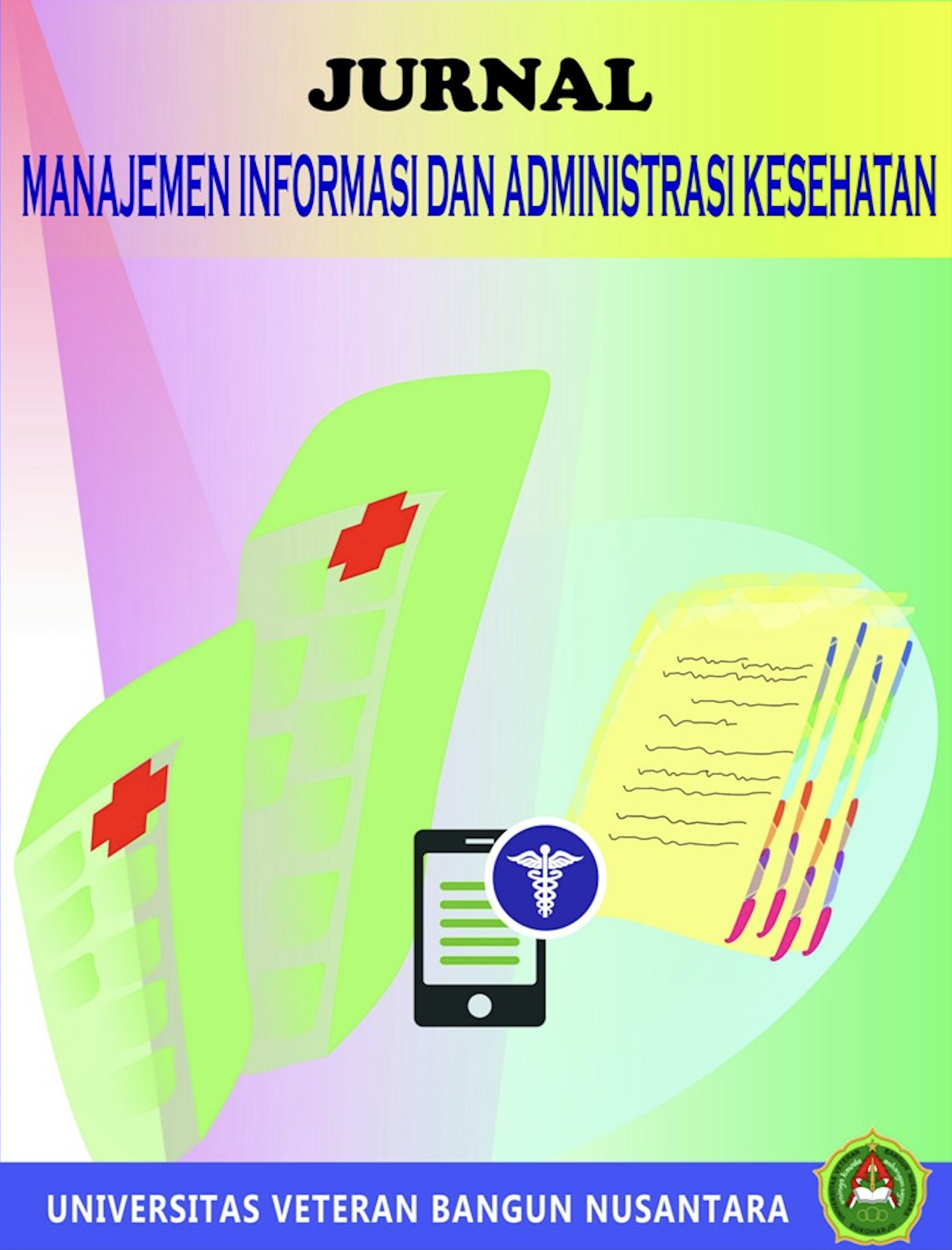Analisis Data Penyakit DBD Dengan K-means clustering di Kabupaten Bantul Menggunakan Data mining
DOI:
https://doi.org/10.32585/jmiak.v6i2.3886Keywords:
Demam Berdarah Dengue, Data mining, K-means clusteringAbstract
Dinas Kesehatan (Dinkes) Bantul mencatat kasus DBD tahun 2021 dan 2022 mengalami kenaikan yaitu 410 kasus dan 885 kasus. Teknik clustering data mining dengan tools orange dapat digunakan untuk menemukan cluster kasus DBD di Kabupaten Bantul. Maka dari itu telah dilakukan clustering dengan teknik K-means clustering menggunakan tools orange untuk mengetahui tingkat persebaran kasus DBD di Kabupaten Bantul. Dengan K-means clustering dihasilkan 3 cluster yaitu tinggi, sedang dan rendah. Dinkes Bantul sudah berupaya menanggulangi DBD dengan PSN, larvasidasi, fogging, penyuluhan dan Wolbachia 2022. Pemanfaatan SISKLB terdapat pengingat saat kasus DBD tinggi terus-menerus. Hasil uji Anova one way terdapat perbedaan rata-rata jumlah kasus DBD secara signifikan dengan p value 0.000.
Downloads
References
Buulolo, E. (2020). Data mining Untuk Perguruan Tinggi. Yogyakarta:Deepublish.
Dinkes Bantul. (2021). Profil Kesehatan Kabupaten Bantul Tahun 2021. Yogyakarta:Dinas Kesehatan Bantul.
Fauzi, M., & Winarni, F. (2018). Efektivitas Program Pemberantasan Sarang Nyamuk Melalui Gertak Psn Di Desa Banguntapan Kecamatan Banguntapan, Bantul. Journal of Public Policy and Administration Research, 7(4), 443-457.
Hasanudin, U. (2023). Kasus DBD di Bantul Menurun, Masyarakat Diminta Tetap Waspada. https://jogjapolitan.harianjogja.com. Diakses tanggal 18 Mei 2023
Hidayani, W. R. (2021). Demam berdarah dengue: Perilaku Rumah Tangga dalam Pemberantasan Sarang Nyamuk dan Program Penanggulangan Demam Berdarah Dengue. Purwokerto:Pena Persada.
Mulaab. (2017). Data mining Konsep dan Aplikasi.Malang:Media Nusa Creative.
Novianto, R., & Goeirmanto, L. (2019). Penerapan Data mining Menggunakan Algoritma K-means clustering untuk Menganalisa Bisnis Perusahaan Asuransi. Jurnal Teknik Informatika dan Sistem Informasi, 85-95.
Nurhafida, I. S., & Sembiring, F. (2021). Analisis Text Clustering Masyarakat Di Twiter Mengenai Mcdonald’Sxbts Menggunakan Orange Data mining. SISMATIK (Seminar Nasional Sistem Informasi Dan Manajemen Informatika), 28–35.
Prianto, C., S. B. (2020). Pembuatan Aplikasi Clustering Gangguan Jaringan Menggunakan Metode K-means clustering. Bandung:Kreatif Industri Nusantara.
Purwati, N., Kurniawan, H., & Karnila, S. (2021). Data mining. Banyumas:Zahira Media Publisher.
Ramadhani, R. & Bina, N. S. (2021). Statistika Penelitian Pendidikan: Analisis Perhitungan Matematis dan Aplikasi SPSS. Jakarta:Kencana
Sari, R. A. (2017). Analisis Faktor Yang Berpengaruh Terhadap Penyakit Demam Berdarah Dengue (DBD) Di Kabupaten Bantul Menggunakan Regresi Poisson. Skripsi. Fakultas Matematika dan Ilmu Pengetahuan Alam UII, Yogyakarta.
Talakua, M. W., Leleury, Z. A., & Talluta, A. W. (2017). Analisis Cluster dengan Menggunakan Metode K-means untuk Pengelompokkan Kabupaten/Kota di Provinsi Maluku Berdasarkan Indikator Indeks Pembangunan Manusia Tahyn 2014. Jurnal Ilmu Matematika dan Terapan, 119-128.
Yuniastuti, E., & Suryo, D. R. (2013). Kajian Tingkat Kerawanan Penyakit Demam Berdarah Dengue (DBD) di Kecamatan Bantul. Geo Media: Majalah Ilmiah dan Informasi Kegeografian, 11(1).
Downloads
Published
Issue
Section
License
Copyright (c) 2024 Jurnal Manajemen Informasi dan Administrasi Kesehatan

This work is licensed under a Creative Commons Attribution-NonCommercial-NoDerivatives 4.0 International License.
The copyright to this article is transferred to Jurnal Manajemen Informasi dan Adminstrasi Kesehatan (JMIAK) if and when the article is accepted for publication under Creative Commons Attribution-ShareAlike 4.0 International License. The undersigned hereby transfers any and all rights in and to the paper including without limitation all copyrights to Jurnal Manajemen Informasi dan Adminstrasi Kesehatan (JMIAK). The undersigned hereby represents and warrants that the paper is original and that he/she is the author of the paper, except for material that is clearly identified as to its original source, with permission notices from the copyright owners where required. The undersigned represents that he/she has the power and authority to make and execute this assignment.
We declare that:
1. This paper has not been published in the same form elsewhere.
2. It will not be submitted anywhere else for publication prior to acceptance/rejection by this Journal.
3. A copyright permission is obtained for materials published elsewhere and which require this permission for reproduction.
Furthermore, I/We hereby transfer the unlimited rights of publication of the above mentioned paper in whole to Jurnal Manajemen Informasi dan Adminstrasi Kesehatan (JMIAK). The copyright transfer covers the right to reproduce and distribute the article, including reprints, translations, photographic reproductions, microform, electronic form (offline, online) or any other reproductions of similar nature. The corresponding author signs for and accepts responsibility for releasing this material on behalf of any and all co-authors. After submission of this agreement signed by the corresponding author, changes of authorship or in the order of the authors listed will not be accepted.
Retained Rights/Terms and Conditions
1. Authors retain all proprietary rights in any process, procedure, or article of manufacture described in the work.
2. Authors may reproduce or authorize others to reproduce the work or derivative works for the author’s personal use or for company use, provided that the source and the Jurnal Manajemen Informasi dan Adminstrasi Kesehatan (JMIAK) copyright notice are indicated, the copies are not used in any way that implies Jurnal Manajemen Informasi dan Adminstrasi Kesehatan (JMIAK)l endorsement of a product or service of any employer, and the copies themselves are not offered for sale.
3. Although authors are permitted to re-use all or portions of the work in other works, this does not include granting third-party requests for reprinting, republishing, or other types of re-use.








